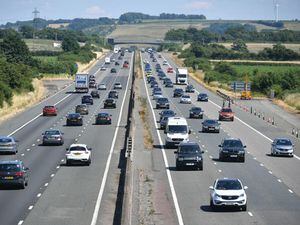New unit to analyse evidence of dangerous driving caught on motorists’ cameras
Other DfT measures to boost road safety include giving councils powers to tackle dangerous parking in mandatory cycle lanes.

A new police unit will be created to analyse evidence of dangerous driving caught on camera by other road users.
The Department for Transport (DfT) announced that the “back office unit” will be among 50 proposed new measures in a two-year plan to protect vulnerable road users and combat road rage.
It will allow police forces to handle video and photographic evidence captured on road users’ devices such as dash cams.
The new unit builds on the success of Operation Snap, which was first piloted by North Wales Police in October 2016 and by the following August had led to it dealing with 129 cases as a result of footage submitted.
Other DfT measures to boost road safety include giving councils powers to tackle dangerous parking in mandatory cycle lanes.
Local authorities will also be encouraged to spend around 15% of their local transport infrastructure funding on walking and cycling.
A new cycling and walking champion will be appointed by the DfT to ensure new policies meet the needs of all road users across the UK.
The Government’s plan also includes assessing whether insurance companies could offer discounts to drivers and motorcyclists who have passed a Bikeability cycle training course.
Incentives could also be given to couriers who have completed the programme.
A review of the Highway Code is being carried out to consider its guidance about how drivers should behave in relation to vulnerable road users.
Cycling and Walking Minister Jesse Norman said: “Greater road safety – and especially the protection of vulnerable road users such as cyclists, pedestrians and horse riders – is essential.
“We want to improve air quality, encourage healthy exercise, reduce obesity and boost our high streets and economic productivity. That means more support for cycling and walking, and that’s why these new measures are designed to deliver.”
An alliance of leading walking and cycling organisations gave its support to the proposed shake-up of the Highway Code but expressed frustration that the overall strategy did not place more emphasis on speed reduction.
The group – consisting of Cycling UK, The Ramblers, British Cycling, Living Streets and Sustrans – believes increasing road safety and reducing the perception of danger are crucial to promoting active travel.
Cycling UK chief executive Paul Tuohy said: “Lowering vehicle speeds around people walking, cycling and horse riding doesn’t just reduce the danger to them, but also their perception of the danger.
“While the DfT’s proposals for amendments to the Highway Code will help save lives, ignoring the threat and dangers of speeding is disappointing.”
Martin Tett, transport spokesman for the Local Government Association, said: “Councils continue to invest in cycling despite being hampered by funding cuts and will always look to introduce cycling provisions as part of new infrastructure when there is a clear need and demand.”
Earlier this year, the DfT launched a consultation to look into whether a new offence equivalent to causing death by careless or dangerous driving should be introduced for dangerous cyclists, after Kim Briggs died when Charlie Alliston crashed into her on a bike with no front brakes.
The consultation closed earlier this month and officials are analysing the responses.





